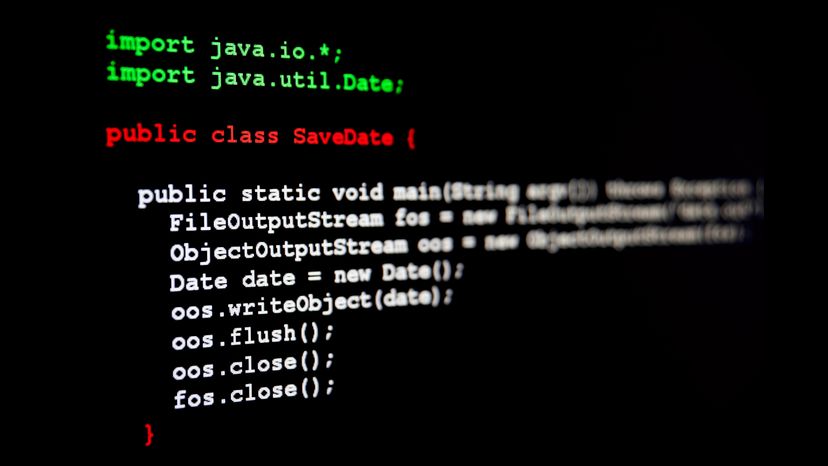Introduction to Java REST APIs
In the world of modern software development, Application Programming Interfaces (APIs) are the backbone of communication between different systems. Among the various API architectures, Representational State Transfer (REST) has become the de facto standard for building web services due to its simplicity, scalability, and stateless nature. When combined with the power and robustness of the Java ecosystem, developers can create highly performant and maintainable APIs that serve as the foundation for complex applications, from enterprise-level systems to dynamic mobile apps. This is where Java REST API development truly shines.
Frameworks like Spring Boot have revolutionized Java Web Development, abstracting away boilerplate code and allowing developers to focus on business logic. This guide will walk you through building a modern Java REST API from the ground up. We will cover the core principles of REST, implement a practical CRUD (Create, Read, Update, Delete) API using Spring Boot, explore advanced topics like exception handling and security, and discuss best practices for testing and optimization. Whether you’re a seasoned developer or new to Java Backend development, this article will provide you with the knowledge to build scalable and resilient APIs for your next project.
Section 1: Core Concepts of REST and Java Implementation
Before diving into code, it’s crucial to understand the fundamental principles that define a RESTful architecture. These constraints ensure that the API is predictable, scalable, and loosely coupled from the client.
Key Principles of REST
- Client-Server Architecture: The client (which consumes the API) and the server (which exposes the API) are separated. This separation of concerns allows them to evolve independently.
- Statelessness: Each request from a client to the server must contain all the information needed to understand and complete the request. The server does not store any client context between requests. This enhances scalability and reliability.
- Uniform Interface: This is a core constraint that simplifies the architecture. It involves using standard HTTP methods (GET, POST, PUT, DELETE), identifying resources via URIs (e.g.,
/api/products/123), and manipulating resources through representations (like JSON or XML). - Cacheability: Responses must, implicitly or explicitly, define themselves as cacheable or non-cacheable to prevent clients from reusing stale data. This improves performance and efficiency.
Mapping REST Concepts to Java with Spring Boot
The Spring Boot framework provides a rich set of annotations that make it incredibly easy to map these REST principles to clean, readable Java Programming code. The core of this is the controller layer, which handles incoming HTTP requests.
@RestController: A convenience annotation that combines@Controllerand@ResponseBody. It tells Spring that this class will handle HTTP requests and that the return value of its methods should be written directly to the HTTP response body as JSON or XML.@RequestMapping("/api/v1"): Maps a base path for all requests handled by the controller.@GetMapping,@PostMapping,@PutMapping,@DeleteMapping: These are specialized annotations for mapping specific HTTP methods, making the code more explicit and readable than using@RequestMappingfor everything.
Here is a basic example of a “Hello World” REST controller in Spring Boot. This simple class demonstrates how to expose an endpoint that responds to HTTP GET requests.
package com.example.api.controller;
import org.springframework.web.bind.annotation.GetMapping;
import org.springframework.web.bind.annotation.RequestMapping;
import org.springframework.web.bind.annotation.RequestParam;
import org.springframework.web.bind.annotation.RestController;
@RestController
@RequestMapping("/api/greeting")
public class GreetingController {
@GetMapping("/hello")
public String sayHello(@RequestParam(value = "name", defaultValue = "World") String name) {
return String.format("Hello, %s!", name);
}
}
Section 2: Building a Practical CRUD API
Let’s move beyond a simple greeting and build a more practical API for managing a “Product” resource. This will involve creating a data model, a repository for database interaction, and a controller for the CRUD operations. We’ll use Spring Data JPA with an in-memory H2 database for simplicity. This setup is common in Java Microservices development for rapid prototyping.

Step 1: The Data Model (JPA Entity)
First, we define our `Product` entity. This is a simple POJO (Plain Old Java Object) annotated with JPA (Java Persistence API) annotations to map it to a database table. We’ll use features from recent Java versions like Java 17 records for conciseness, though a traditional class would also work.
package com.example.api.model;
import jakarta.persistence.Entity;
import jakarta.persistence.GeneratedValue;
import jakarta.persistence.GenerationType;
import jakarta.persistence.Id;
@Entity
public class Product {
@Id
@GeneratedValue(strategy = GenerationType.IDENTITY)
private Long id;
private String name;
private double price;
// Constructors, Getters, and Setters
public Product() {}
public Product(String name, double price) {
this.name = name;
this.price = price;
}
public Long getId() { return id; }
public void setId(Long id) { this.id = id; }
public String getName() { return name; }
public void setName(String name) { this.name = name; }
public double getPrice() { return price; }
public void setPrice(double price) { this.price = price; }
}
Step 2: The Repository Interface
Next, we create a repository interface using Spring Data JPA. By simply extending `JpaRepository`, we get a full suite of database operations (like `save()`, `findById()`, `findAll()`, `deleteById()`) out of the box, without writing any implementation code. This is a powerful feature of the Java Spring ecosystem.
package com.example.api.repository;
import com.example.api.model.Product;
import org.springframework.data.jpa.repository.JpaRepository;
import org.springframework.stereotype.Repository;
@Repository
public interface ProductRepository extends JpaRepository<Product, Long> {
// Spring Data JPA will automatically implement CRUD methods.
// You can add custom query methods here if needed.
}
Step 3: The REST Controller
Finally, we create the `ProductController` to expose the CRUD endpoints. This controller will use the `ProductRepository` to interact with the database. Notice the use of `ResponseEntity` to give us full control over the HTTP response, including status codes and headers.
package com.example.api.controller;
import com.example.api.model.Product;
import com.example.api.repository.ProductRepository;
import org.springframework.beans.factory.annotation.Autowired;
import org.springframework.http.HttpStatus;
import org.springframework.http.ResponseEntity;
import org.springframework.web.bind.annotation.*;
import java.util.List;
import java.util.Optional;
@RestController
@RequestMapping("/api/products")
public class ProductController {
@Autowired
private ProductRepository productRepository;
@GetMapping
public List<Product> getAllProducts() {
return productRepository.findAll();
}
@GetMapping("/{id}")
public ResponseEntity<Product> getProductById(@PathVariable Long id) {
Optional<Product> product = productRepository.findById(id);
return product.map(ResponseEntity::ok)
.orElseGet(() -> ResponseEntity.notFound().build());
}
@PostMapping
public ResponseEntity<Product> createProduct(@RequestBody Product product) {
Product savedProduct = productRepository.save(product);
return new ResponseEntity<>(savedProduct, HttpStatus.CREATED);
}
@PutMapping("/{id}")
public ResponseEntity<Product> updateProduct(@PathVariable Long id, @RequestBody Product productDetails) {
return productRepository.findById(id)
.map(product -> {
product.setName(productDetails.getName());
product.setPrice(productDetails.getPrice());
Product updatedProduct = productRepository.save(product);
return ResponseEntity.ok(updatedProduct);
})
.orElseGet(() -> ResponseEntity.notFound().build());
}
@DeleteMapping("/{id}")
public ResponseEntity<Void> deleteProduct(@PathVariable Long id) {
if (!productRepository.existsById(id)) {
return ResponseEntity.notFound().build();
}
productRepository.deleteById(id);
return ResponseEntity.noContent().build();
}
}
Section 3: Advanced Techniques and Modern Java Features
A production-ready API requires more than just basic CRUD functionality. We need robust error handling, secure data contracts, and efficient data processing. Here, we’ll explore some advanced topics that elevate your Java REST API.
Centralized Exception Handling
Instead of littering your controllers with `try-catch` blocks, Spring provides a powerful mechanism for centralized exception handling using `@ControllerAdvice`. This approach keeps your controller logic clean and ensures consistent error responses across the entire API.
First, let’s define a custom exception for when a resource is not found.
package com.example.api.exception;
import org.springframework.http.HttpStatus;
import org.springframework.web.bind.annotation.ResponseStatus;
@ResponseStatus(value = HttpStatus.NOT_FOUND)
public class ResourceNotFoundException extends RuntimeException {
public ResourceNotFoundException(String message) {
super(message);
}
}
Now, we can create a global exception handler to catch this exception and return a structured, user-friendly JSON error response.

package com.example.api.exception;
import org.springframework.http.HttpStatus;
import org.springframework.http.ResponseEntity;
import org.springframework.web.bind.annotation.ControllerAdvice;
import org.springframework.web.bind.annotation.ExceptionHandler;
import org.springframework.web.context.request.WebRequest;
import java.time.LocalDateTime;
import java.util.LinkedHashMap;
import java.util.Map;
@ControllerAdvice
public class GlobalExceptionHandler {
@ExceptionHandler(ResourceNotFoundException.class)
public ResponseEntity<Object> handleResourceNotFoundException(
ResourceNotFoundException ex, WebRequest request) {
Map<String, Object> body = new LinkedHashMap<>();
body.put("timestamp", LocalDateTime.now());
body.put("message", ex.getMessage());
body.put("path", request.getDescription(false));
return new ResponseEntity<>(body, HttpStatus.NOT_FOUND);
}
// Add other exception handlers for different scenarios
}
Using DTOs and Java Streams for Data Transformation
Exposing JPA entities directly in your API is often considered a bad practice. It can lead to security vulnerabilities (exposing internal data structures) and tightly couples your API contract to your database schema. The Data Transfer Object (DTO) pattern solves this. A DTO is a simple object used to transfer data between layers.
We can leverage modern Java Streams and Java Lambda expressions for elegant and efficient mapping between entities and DTOs in a service layer. This promotes Clean Code Java principles.
// In your ProductService.java
import java.util.List;
import java.util.stream.Collectors;
// ...
public List<ProductDTO> getAllProductsAsDTOs() {
List<Product> products = productRepository.findAll();
// Using Java Streams API for transformation
return products.stream()
.map(this::convertToDto)
.collect(Collectors.toList());
}
private ProductDTO convertToDto(Product product) {
ProductDTO dto = new ProductDTO();
dto.setId(product.getId());
dto.setProductName(product.getName()); // Field names can be different
// We can choose not to expose the price, for example.
return dto;
}
Section 4: Security, Testing, and Best Practices
Building a functional API is only half the battle. Ensuring it’s secure, reliable, and maintainable is equally important. This section covers essential best practices for production-grade Java Development.
API Security with Spring Security

Securing your API is non-negotiable. Spring Security is the standard framework for handling authentication and authorization in a Spring application. For stateless REST APIs, common approaches include:
- JWT (JSON Web Tokens): A popular method for stateless authentication. The client authenticates once to get a token, then includes that token in the header of subsequent requests. Our server can validate this token without needing a session. This is crucial for Java Scalability.
- OAuth 2.0: A robust authorization framework that allows third-party applications to obtain limited access to an HTTP service.
Effective API Testing
A thorough testing strategy ensures your API is reliable and behaves as expected.
- Unit Testing: Use frameworks like JUnit and Mockito to test individual components (like services or utility classes) in isolation.
- Integration Testing: Spring Boot provides excellent support for integration testing. Using
@SpringBootTestandMockMvc, you can test the full request-response cycle of your controllers without needing to deploy to a real server.
Here’s an example of an integration test for our `ProductController`’s GET endpoint.
package com.example.api.controller;
import com.example.api.model.Product;
import com.example.api.repository.ProductRepository;
import org.junit.jupiter.api.Test;
import org.springframework.beans.factory.annotation.Autowired;
import org.springframework.boot.test.autoconfigure.web.servlet.AutoConfigureMockMvc;
import org.springframework.boot.test.context.SpringBootTest;
import org.springframework.http.MediaType;
import org.springframework.test.web.servlet.MockMvc;
import static org.springframework.test.web.servlet.request.MockMvcRequestBuilders.get;
import static org.springframework.test.web.servlet.result.MockMvcResultMatchers.*;
@SpringBootTest
@AutoConfigureMockMvc
public class ProductControllerIntegrationTest {
@Autowired
private MockMvc mockMvc;
@Autowired
private ProductRepository productRepository;
@Test
public void whenGetProductById_thenReturnsProduct() throws Exception {
// Given: a product exists in the database
Product product = productRepository.save(new Product("Test Laptop", 1200.00));
// When & Then: perform GET request and verify the response
mockMvc.perform(get("/api/products/" + product.getId())
.contentType(MediaType.APPLICATION_JSON))
.andExpect(status().isOk())
.andExpect(jsonPath("$.name").value("Test Laptop"))
.andExpect(jsonPath("$.price").value(1200.00));
}
}
API Versioning and Documentation
- Versioning: As your API evolves, you’ll need to introduce breaking changes without disrupting existing clients. A common strategy is to version your API via the URL path (e.g.,
/api/v2/products). - Documentation: Clear documentation is vital for API consumers. Tools like Springdoc-openapi can automatically generate OpenAPI 3 (formerly Swagger) documentation from your Spring Boot controllers, providing an interactive UI for exploring and testing your API.
Conclusion
We have journeyed from the foundational principles of REST to building a complete, practical, and robust Java REST API using Spring Boot. You’ve learned how to implement CRUD operations, handle exceptions gracefully, use DTOs for secure data transfer, and write meaningful tests. The combination of Java’s mature ecosystem and Spring’s modern conventions provides a powerful platform for building scalable and maintainable backend services.
Your next steps could be to explore deploying your application to a Java Cloud provider like AWS or Azure, containerizing it with Docker Java, or orchestrating it with Kubernetes Java. You can also dive deeper into advanced topics like Java Concurrency with CompletableFuture for asynchronous APIs, reactive programming with Spring WebFlux, or performance tuning with JVM Tuning. The world of Java development is vast, and building a solid REST API is a cornerstone skill for any modern developer.
